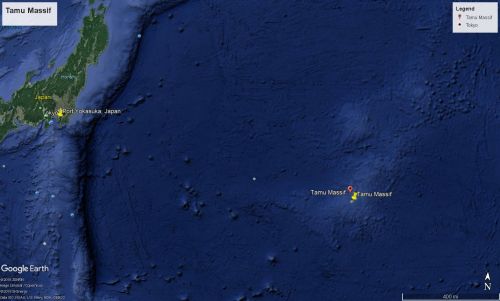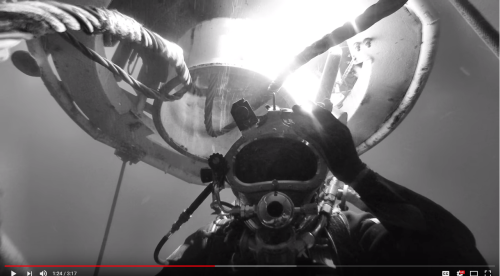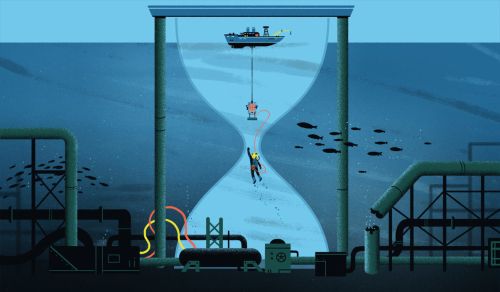Writing involves research. Alex the Fey #8 is about getting to the Tamu Massif
My friend, Dan Blank, says that readers are fascinated with what I go through to write the Fey books.
I'm not sure that I believe him because what I'm am so obsessive and boring about getting all of the details right. (We've been talking about this for years.) But here goes...
Every book starts with obsessive, detailed research. In the Deep, Alex the Fey #8, is no different. My first step is doing the research, do the work.

Researching the Tamu Massif
My first research on the Tamu Massif happened in 2106 when I was working on About Face. I read everything available at the time, and then had a funny and fascinating email exchange with the world's expert on the Tamu Massif, William Sager. He was lovely and very helpful.
Two years later, another book to write, and Alex needs to get to the Tamu Massif.
There's no time to waste. Alex and the team have analyzed the map. Alex knows exactly where she needs to go in the Tamu Massif complex. She would never let anyone else take the risk of going into the deep. She could never accept that a machine would do the work.
How is she going get there? She's going to saturation dive.
Saturation, what?
Right now, men (yes, only men) who are working at or near the bottom of the ocean. They are steel workers, construction workers, and pipe fitters. Mostly, they work for oil and gas companies. The majority of them work at the bottom of the North Sea. The majority of them work to maintain oil and gas lines.
Some saturation divers work for the U.S. Navy. In the 1970s, they were a part of a nuclear submarine team. They completed covert operations from the submarine. The submarine has been retired. The soldiers have retired. And their missions declassified. Now, as far as is publicly known, saturation divers work for the United States Navy Experimental Diving Unit (NEDU).
What the heck is a saturation diving?
Saturation diving is a diving technique that allows human beings to work in the ocean at great depths up to 300 meters (nearly 1000 feet) under the ocean surface. (The maximum dive is over 500 meters, but that's not done on a regular basis.)
In order to do this dive, divers must do two things:
- Breathe a mixture of helium, oxygen, hydrogen, and special sauce (classified by manufacturers).
- Live at compression. <--that's what it's called.
In order to go down to 300 meters under the ocean, divers live at the compression pressure which matches the ocean pressure where they will work. If they are working at 300 meters, they live at 300 meters. (Most divers work at around 180-200 meters.) The divers are locked into their living quarters. It takes at least two days to get "under compression" and nearly a month to come out of compression.
Research (my process)
My first step is to learn everything I possibly can about a topic before I start writing a scene. In order to make things readable, I go back over the scene at least two more times to be sure that these technical, difficult situations are easy to understand and readable.
Then the book goes to editing. The editor(s) highlights anything that's confusing or not clear. The editor usually gives me detailed notes about the book.
I return to the book, eliminate any unnecessary details and technical language, and work to make complicated, technical situations easy and fun to read.
For In Deep, I must learn everything I can about saturation diving.
I always start with documentaries. I usually watch these with the husband so that we can talk about them when we're done. For saturation diving, I found a BBC "Real Men" Series -- Saturation Diving. That video gives you a general idea of what it's like to be a European Saturation Diver. I watched it once myself and then watched it with the husband.
Saturation diving is done differently in America. The teams are much smaller. They tend to work on their own for longer periods of time. Divers head out into the deep by themselves with only a person to monitor their lines.
According to American Saturation Divers, American divers are tougher and more experienced than Europeans. Of course, European Saturation Divers say that American divers are "dangerous." The teams of people do not mix. American companies hire American divers. EU companies hire divers from around the world.
This is a Divers Institute of Technology video. It is a great overview of saturation diving in America.

After the videos, I read everything available online about saturation diving, starting with Wikipedia. Atlas Obscura has a wonderful article about saturation diving, The Weird, Dangerous Isolated Life of a Saturation Diver.

<
Once I have a sense of what I am talking about, I start to look for people who actually do this work. I've found that people are always my best source. Everyone likes to talk about what they do to someone who wants to understand.
I found two men on Twitter who were outrageously generous in sharing their time and wisdom. One was an American who told me about American diving. The other man was from Ireland. He helped me with the specifics about European Saturation Diving.
Both men talked about the sheer physical strain of going under compression as well as the difficulty in the work itself. In the Irishman's time off, he competes in extreme running and other sports. He says that saturation diving keeps him ready and in shape for these other stunts.
What about the U.S. Navy?
That's an entirely different story. I found a man on LinkedIn who works as a saturation diver. I contacted him, and he agreed to help me if it was okay with his C.O.
This led to a few weeks of being vetted by the U.S. Navy. I had to get specific permission from the Pentagon to speak with the information officer and then to this soldier. Phew!
Of course, the U.S. Navy is a little different from both the European and the American saturation diving.
In the first place, almost everything they do is classified.
Because I am interested in "how" things work (and not what they are doing), I was able to speak directly with this soldier. He has been extraordinarily generous with his time and wisdom.
As of today, I'm working on In Deep, getting help from this U.S. Navy diver, and trying to keep it readable. Hopefully, all of these details will make for a better story.
(Originally published in the Claudia's Corner Newsletter. This newsletter shares stories, discounts, and Claudia's writing journey. Go here to sign up for your copy of the newsletter.)
-----
